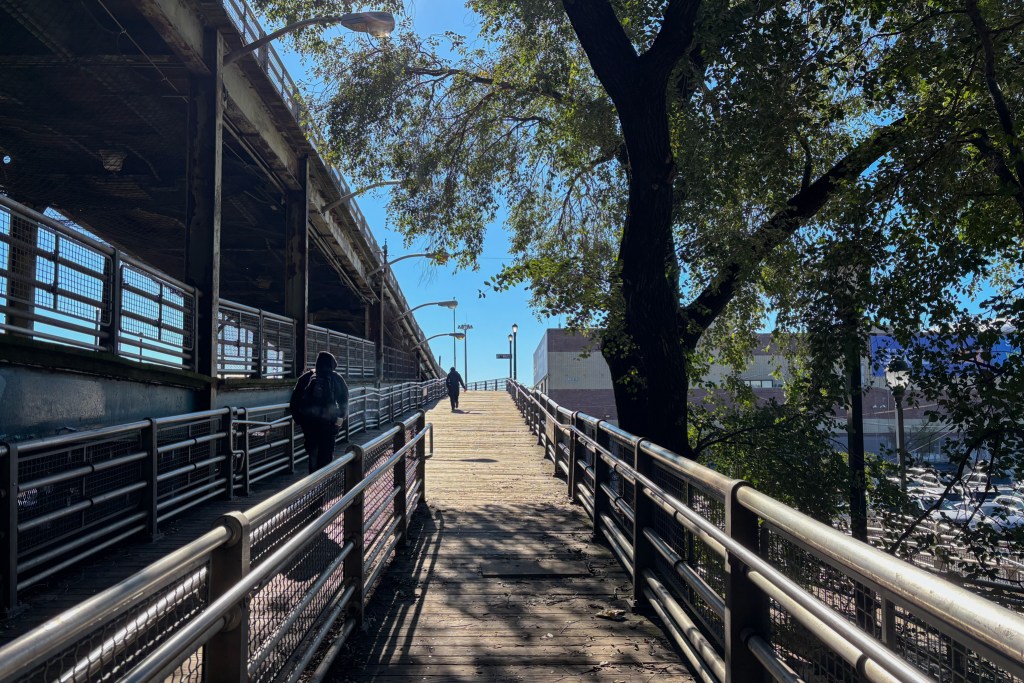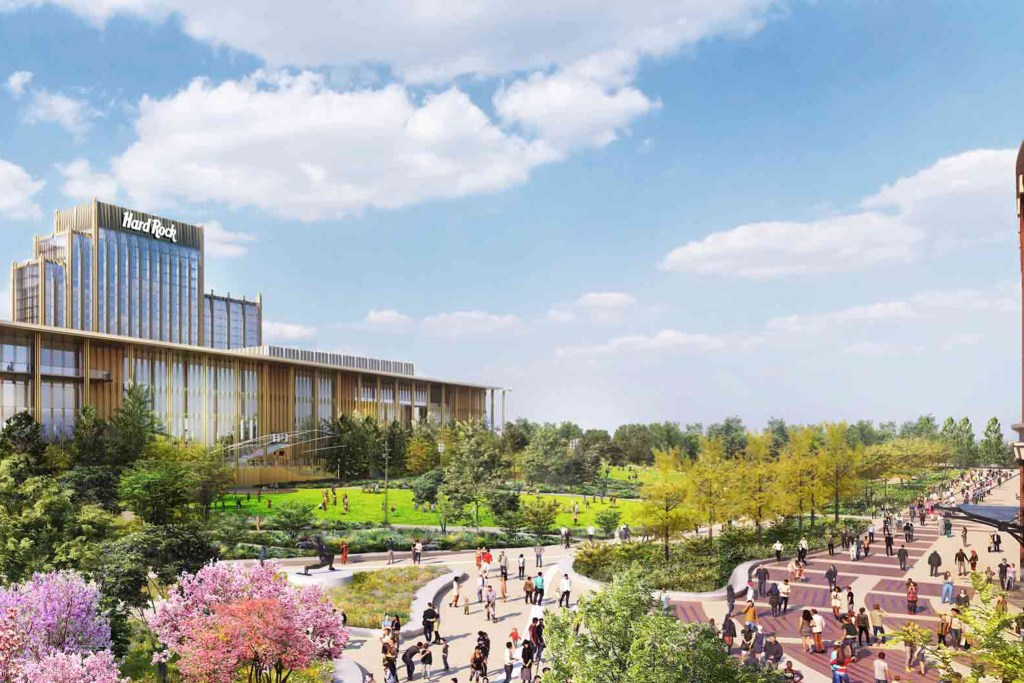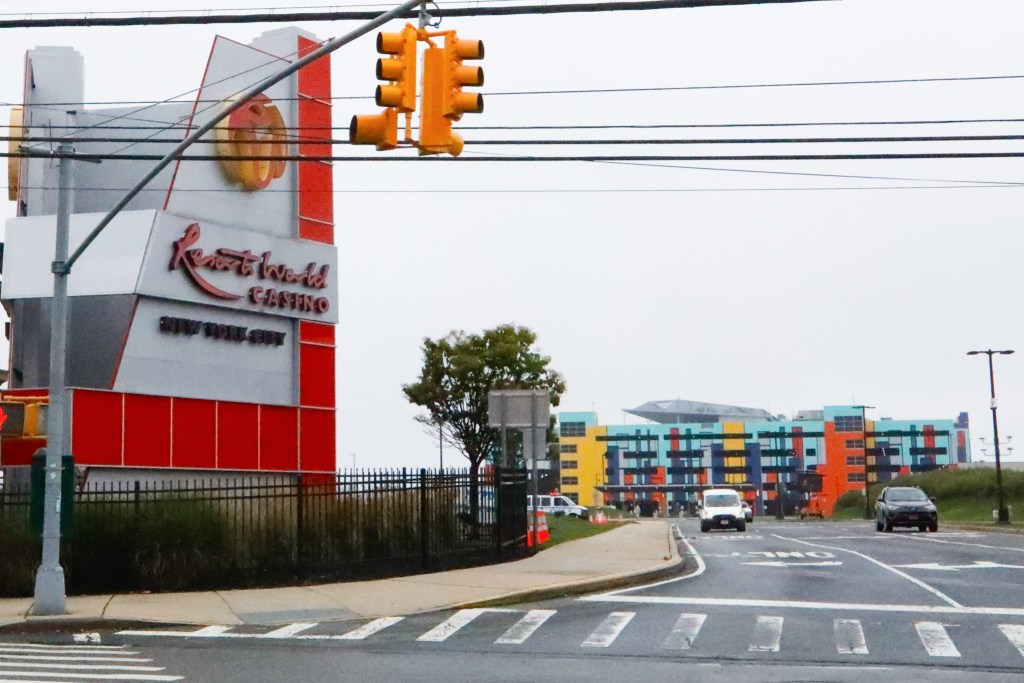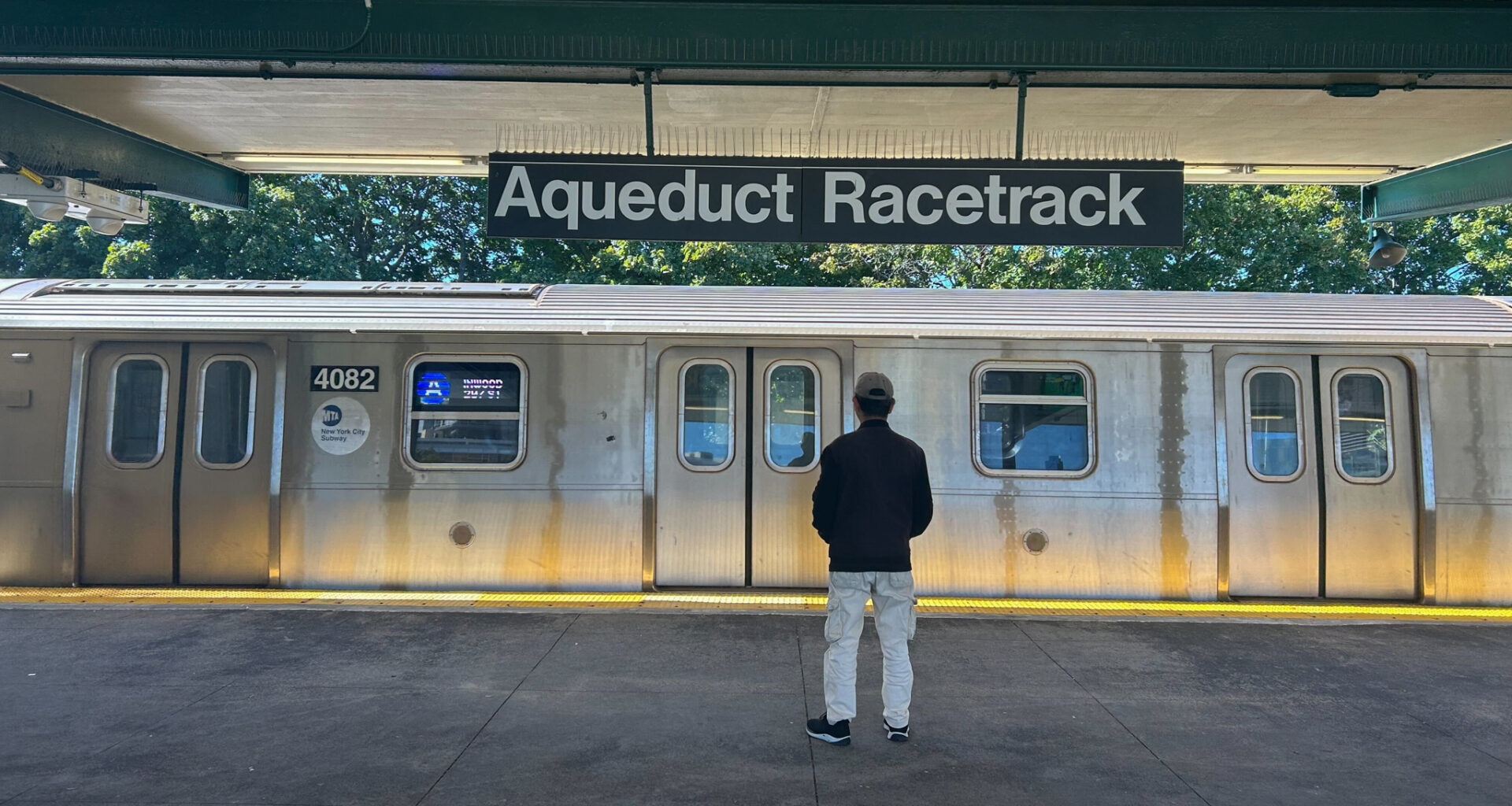New York’s mass-transit system is banking on billions of dollars from the state’s bet to bring full-scale casinos to the city.
With three gaming-palace proposals still on the table — two in Queens and one in The Bronx — the MTA is counting on close to $2 billion through 2029 just from casino-licensing fees earmarked for the transportation authority’s annual operating budget. Billions more could come from tax revenue, depending on how licenses are awarded.
“More service, better service, no layoffs,” Janno Lieber, MTA chairperson and chief executive, said Oct. 10 in response to a question from THE CITY about the potential impact of casinos on the transit system. “That’s what we accomplished thanks to Gov. Hochul and that’s what we’re going to use that casino-licensing money for when it lands.”
Gov. Kathy Hochul and state lawmakers locked in the anticipated funding infusion for the MTA in February 2023 as part of the next year’s state budget, while also ensuring an additional chunk for transit operations from recurring casino sales-tax revenues. That came on the heels of legislators lifting a ban on Las Vegas-style casinos in the city, Westchester County and on Long Island.
But with the eight original downstate casino applicants now whittled down to three finalists, the prospect of casino money flowing into operations for the MTA is rounding into shape, with the gaming companies potentially making additional investments to stations or service.
A report this month from state Comptroller Thomas DiNapoli, as well as the MTA’s July financial plan, note that future operating budgets hinge on the timing of the casino announcement. A final decision by the New York State Gaming Commission is expected by the end of the year.
The MTA financial plan relies on $500 million from casinos in 2026 and in 2027, $600 million in 2028 and $200 million in 2029.
“They are banking on that money in 2026, 27, 28,” said Rachael Fauss, senior policy advisor for Reinvent Albany. “The good news for the MTA is that it seems like what was somewhat speculative is actually coming through because now you’ve got the three different casinos and licenses falling into place for them.”
The finalists include a bid to build a casino next to Bally’s Golf Links at Ferry Point, the Bronx golf course formerly operated by the Trump Organization. Then there are dueling Queens proposals from Mets owner Steve Cohen and Hard Rock International for a location near Citi Field and another from Genting Group to expand Resorts World New York City next to Aqueduct Racetrack.
A fourth finalist, MGM Resorts International, last week abruptly pulled its bid to significantly expand operations at the Yonkers Raceway, where it operates the Empire City Casino, a so-called racino with 4,700 slot machines and electronic table games. The company pinned the decision to withdraw on shifts to the “competitive and economic assumptions underpinning our application,” which altered the company’s anticipated return on its proposed investment.
‘Hidden Benefits’ for Transit
Each company, as required by the Gaming Commission, has pledged to spend at least $500 million on community benefits to areas neighboring the casino developments. At the request of community advisory committees, the bidders have committed to improvements for nearby housing, roads and public parks.
There are also promises tied to the transportation network, including subway and bus service, ferry routes and roads.
Lisa Daglian, executive director of the Permanent Citizens Advisory Committee to the MTA, welcomes such potential perks.
“There are hidden benefits that we could anticipate as well, such as improvements to the accessibility at some of the stations, such as perhaps additional service that some of the operators may want to see,” she said.
Increasing subway accessibility for people with disabilities has already been floated by one of the casino bidders as a possible gain.
Next to Citi Field, where the proposal pitches a casino in what is now a stadium parking lot, more than $1 billion is pegged to community upgrades across the 50-acre Metropolitan Park development. Among them would be an overhaul of the No. 7 line’s Mets-Willets Point station, which lacks elevators and is only partially accessible under the 1990 Americans with Disabilities Act. A ramp from the station connects with Roosevelt Avenue.
 A pedestrian overpass at the Mets-Willets Point station connecting the 7 train and LIRR with Citi Field and Fresh Meadows Corona Park showed signs of decay, Oct. 16, 2025. Credit: Lauren Hartley/THE CITY
A pedestrian overpass at the Mets-Willets Point station connecting the 7 train and LIRR with Citi Field and Fresh Meadows Corona Park showed signs of decay, Oct. 16, 2025. Credit: Lauren Hartley/THE CITY
“We’ve been carrying it up because there’s so many stairs,” Jenny Leong said Thursday as she lugged a stroller up the stairs to a train platform after going swimming at the Flushing Meadows Corona Park Aquatic Center. “There should be an elevator.”
Other developer-driven improvements at the subway station — where ridership topped 1.9 million in 2024 — would be a “seamless connection” to Metropolitan Park developments, including housing, retail and the New York City FC soccer stadium that is under construction.
But the Cohen-Hard Rock bid does not make room for long-overdue accessibility upgrades at the Long Island Rail Road stop just across the boardwalk from the subway station. The MTA pledged in September 2014 to make the LIRR station near the USTA Billie Jean King National Tennis Center ADA-compliant by 2016, but those plans have been repeatedly slowed, as THE CITY has previously reported.
In documents submitted to the Gaming Commission by Hard Rock at Metropolitan Park, an official wrote that the bid “proposes the most expansive slate of transportation-oriented improvements of any gaming application,” while noting that the LIRR station “is not even within our project footprint.”
 A rendering shows plans for the Metropolitan Park casino next to Citi Field. Credit: Via Hard Rock Hotel & Casino
A rendering shows plans for the Metropolitan Park casino next to Citi Field. Credit: Via Hard Rock Hotel & Casino
Platform Possibilities
Further south in Queens, the Genting Group has big expansion plans for the existing Resorts World New York City, which has more than 5,800 slot machines and electronic table games. The company last week upped its proposed license fee to $600 million, which would pump an additional $100 million into the MTA operating budget.
The company’s supplemental bid projects that the casino will generate $18.8 billion in its first decade of expanded operations, with half of that money going to MTA operations.
Among the transportation possibilities being looked at by the company is the potential to build a platform for southbound service at the A line’s stop at Aqueduct Racetrack — the only station in the system with one-way service. According to bid documents, an overpass would have to be built over the tracks at the station, which connects to the casino via a covered skybridge.
Officials for Resorts World New York City said the company is “in active conversations with the MTA” about adding the second platform at the station and also committed to replacing the skybridge.
Until then, those who take the A train from Manhattan, Brooklyn or elsewhere in Queens to get to the casino or the horse track have to exit one stop away at the nearby Aqueduct-North Conduit Avenue station and catch a Resorts World shuttle bus or walk. Three MTA bus lines already provide service to and from the casino.
 The Resorts World casino next to the Aqueduct Race Track in Queens, Sept. 25, 2025. Credit: Alex Krales/THE CITY
The Resorts World casino next to the Aqueduct Race Track in Queens, Sept. 25, 2025. Credit: Alex Krales/THE CITY
“If more people will be coming here, then the casino company and the MTA have to find some other ways where one can help the other,” said Julio Cesar Portez, 72, who lives near the Aqueduct Racetrack station.
Previously open only on racing days, Aqueduct Racetrack became a full-time stop in 2013, following the opening two years earlier of the racino. As part of a $15 million station makeover, an elevated walkway was built to connect the station with the casino and Resorts World New York City agreed to maintain a new elevator and entrance.
At the time, the casino operator expressed interest in buying the naming rights to the Aqueduct Racetrack station.
In 2009, the MTA sold the naming rights to the former Atlantic Avenue/Pacific Street subway complex, now the Atlantic Avenue–Barclays Center station, as part of a $4 million, 20-year deal. The hub that connects several subway lines with Barclays Center remains the sole station out of 472 systemwide with a naming-rights deal.
Daglian said station naming rights could come into play again at either of the potential Queens casinos.
“It’s not something that Citi wanted to do with Mets-Willets Point, but would Metropolitan Park want to do it? We’ll see,” she said. “You know, Steve Cohen has a couple competing activities there.”
Bally’s proposal for a part of The Bronx that is not near the subway system pegs at least $75 million in funding for transportation upgrades. Those include two new MTA bus stops and enhanced access to the hoped-for casino via public transportation.
In its application materials, Bally’s notes it will seek “further engagement” with NYC Ferry to explore modifying schedules and increasing service to the existing Ferry Point Park stop, adding that it will enhance its free shuttle bus service between the ferry and the casino.
In addition, the developers have secured conditional approval from the state Department of Transportation for a new Lafayette Avenue highway overpass, along with widened roads. Overall, the Bronx casino proposal focuses much more on motorists than transit riders, with the developers boasting that the new development would have 16 acres of parking lots that could hold 4,660 cars, and how easy the casino would be to get to on existing highways.
But for a mass transit system that has often teetered on the brink of financial pitfall, the casino licensing fees and future recurring tax revenues add up to a needed boost.
“They are certainly a funding mechanism for the operations,” Daglian said. “That was baked into bringing them to [New York City].”
Lieber, the head of the MTA, cited how transit systems in several other major U.S. cities are now “in crisis,” with riders there facing service cuts or double-digit fare hikes. New York, meanwhile, is looking at the tantalizing prospect of big bucks from casinos.
“That is going to make sure that we can continue what we’re doing, which is running a heck of a lot more service than we used to,” he said.
Related

